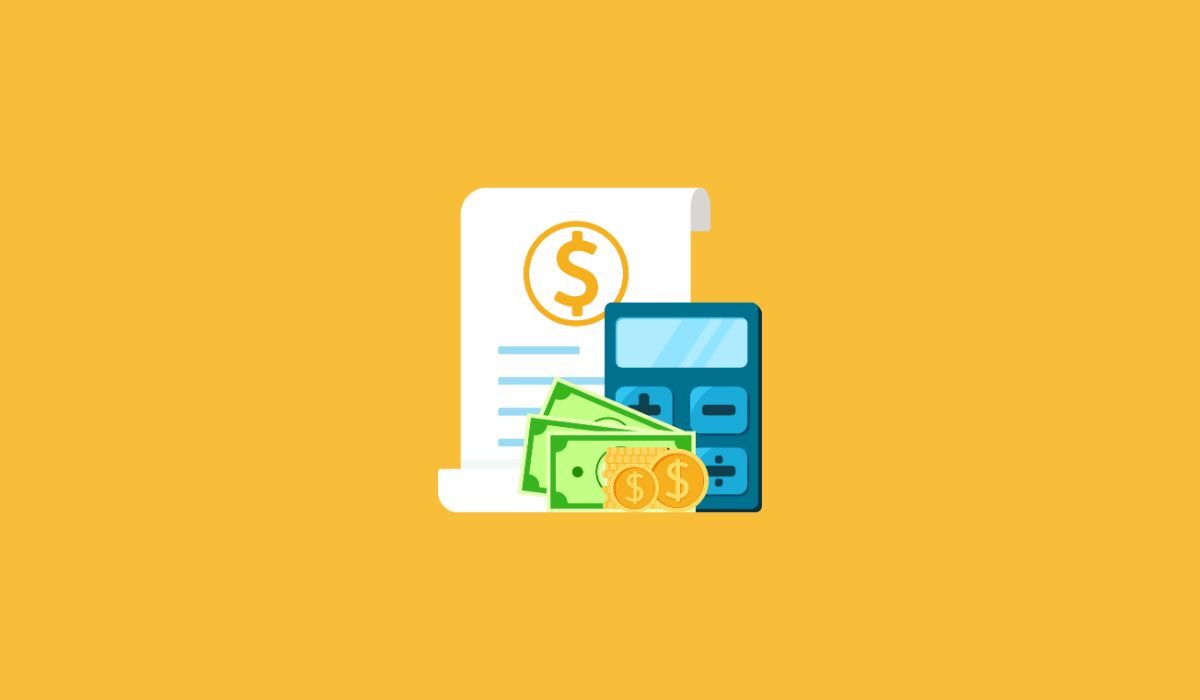Have you ever wondered, “How much does it cost to build a Fintech app?” You’re not alone. Given the booming US$112.90bn in 2023, as reported by Statista, more and more businesses are eyeing to tap into this lucrative sector. But, is it possible to create a top-notch Fintech app without burning a hole in your pocket? The answer is an astounding ‘yes.’
Building an affordable Fintech app doesn’t mean you have to compromise on quality or functionality. With careful planning, smart decision-making, and choosing the right development team, you can significantly reduce your Fintech app development cost.
Interestingly, the cost isn’t set in stone. It can vary as much as the cost of creating a dating app. For instance, have you ever asked, “How much does it cost to build a dating app?” Like with Fintech apps, many factors come into play. These include the app’s features, complexity, platform choice, and the geographic location of your development team.
In this guide, we’ll take you on a journey to explore the cost of building an affordable Fintech app. We’ll consider all the factors influencing the cost and give you practical tips to manage your budget effectively. Buckle up and let’s dive in.
The Rise of Fintech: A Look at the Market Landscape
The fintech sector has seen remarkable growth in recent years, driven by several key factors:
- Market Value: The global fintech market is valued at US$112.90bn in 2023, with a strong growth trajectory, according to Statista.
- Diverse Applications: Fintech is revolutionizing various aspects of financial services, including payments, lending, investing, and insurance.
- Mobile Banking: A Business Insider Intelligence’s Mobile Banking Competitive Edge Study reports 89% of respondents use mobile banking for routine transactions.
- COVID-19 Impact: The pandemic has accelerated the adoption of digital financial services, increasing reliance on fintech apps.
- Investment Trends: As per KPMG’s Pulse of Fintech H2’2020 report, global fintech investment reached $105 billion in 2020, indicating strong investor interest.
Fintech App Development Cost: The Key Factors
Just like constructing a building, app development cost depends on several factors. It’s important to understand these factors to manage the costs effectively. Here are the major components:
Complexity and Functionality
The complexity of your fintech app is one of the key cost determinants. More features and advanced functionality mean more development time and, consequently, higher costs.
Platform Choice
Are you looking to build an iOS app, an Android app, or both? Your platform choice significantly influences the overall cost. Building for both platforms can raise the price, but it also broadens your market reach.
Design Intricacies
A compelling and user-friendly design is crucial for app success. However, intricate and customized designs can add to the cost.
Geographic Location of Development Team
The location of your app development team plays a crucial role in determining the cost. Developers’ hourly rates vary dramatically across regions.
Maintenance and Updates
Post-launch maintenance and updates are often overlooked when calculating app development costs. Regular updates to fix bugs, improve performance, and add new features are essential to keep your app competitive and up-to-date.
Do You Know? How Much Does It Cost to Develop an NFT Marketplace?
Breaking Down the Cost of Fintech App Development
Let’s dig a bit deeper and try to assign some numbers to the factors discussed above. Remember, these are rough estimates and actual costs may vary.
Complexity and Functionality
| App Complexity Level | Estimated Cost |
|---|---|
| Basic (Simple features and functionality) | $10,000 – $25,000 |
| Medium (More features and increased functionality) | $25,000 – $50,000 |
| High (Advanced features and complex functionality) | $50,000 and above |
Platform Choice
| Platform | Estimated Cost |
|---|---|
| iOS | $10,000 – $50,000 |
| Android | $10,000 – $50,000 |
| Both (Cross-platform development) | $20,000 – $75,000 |
Design Intricacies
| Design Complexity | Estimated Cost |
|---|---|
| Basic Design | $2,000 – $5,000 |
| Medium Complexity Design | $5,000 – $10,000 |
| High Complexity Design | $10,000 and above |
Geographic Location of Development Team
| Geographic Location | Average Hourly Rate |
|---|---|
| North America | $100 – $150 |
| Europe | $50 – $100 |
| Asia | $20 – $50 |
Types of FinTech Applications and Their Cost Estimate
Payment and Remittance Applications
Payment and remittance apps have gained immense popularity, enabling individuals and businesses to transfer funds quickly and securely. These applications provide a convenient and efficient way to make peer-to-peer payments, pay bills, and conduct online transactions. Key features of payment and remittance applications include:
- Seamless integration with multiple payment gateways and financial institutions
- Real-time transaction tracking and notifications
- QR code and NFC-based payments
- In-app wallets for storing and managing funds
- Enhanced security measures such as two-factor authentication
Cost Estimate: The cost of developing a payment and remittance application typically ranges between $50,000 and $150,000, depending on the complexity of features, platform compatibility (iOS, Android, web), and integration with third-party payment gateways.
Are you ready for Metaverse Development? How much Does It Cost To Create Metaverse?
Personal Finance and Budgeting Applications
Personal finance and budgeting apps empower users to manage their finances effectively, track expenses, and plan budgets. These apps provide a holistic view of one’s financial health, enabling users to set financial goals and monitor their progress. Key features of personal finance and budgeting applications include:
- Account aggregation and categorization of expenses
- Transaction history and spending analysis
- Budget creation and tracking
- Bill payment reminders
- Financial goal setting and progress tracking
- Financial insights and recommendations
Cost Estimate: The cost of developing a personal finance and budgeting app typically ranges between $60,000 and $120,000. The cost may vary based on factors such as complexity of features, data integration with banks and financial institutions, and the inclusion of advanced analytics and reporting capabilities.
Investment and Trading Applications
Investment and trading apps have gained significant traction, providing users with easy access to stock markets, cryptocurrencies, and other investment opportunities. These apps offer real-time market data, portfolio management tools, and facilitate seamless buying and selling of securities. Key features of investment and trading applications include:
- Real-time stock market data and news feeds
- Portfolio tracking and performance analytics
- Trading functionality with multiple order types
- Integration with brokerage accounts and payment gateways
- Research tools and investment insights
- Alerts and notifications for price movements and market trends
Cost Estimate: The cost of developing an investment and trading app can range from $80,000 to $200,000, depending on factors such as the complexity of trading algorithms, integration with third-party brokerage platforms, inclusion of advanced charting and technical analysis tools, and compliance with regulatory requirements.
Lending and Borrowing Platforms
Lending and borrowing platforms have disrupted traditional banking models, offering alternative financing options for individuals and businesses. These platforms facilitate peer-to-peer lending, crowdfunding, and microloans, providing borrowers with access to quick and hassle-free funding. Key features of lending and borrowing platforms include:
- User profiles and credit assessment
- Loan request submission and approval process
- Loan marketplace and investor matching
- Payment schedule and interest calculation
- Collateral management (if applicable)
- Secure online document exchange
Cost Estimate: The cost of developing a lending and borrowing platform typically ranges between $70,000 and $150,000, depending on factors such as the complexity of the lending model, integration with credit scoring agencies, compliance with regulatory frameworks, and the inclusion of features like automated loan disbursement and repayment reminders.
Insurance Technology (InsurTech) Applications
InsurTech applications have transformed the insurance industry by providing users with a seamless digital experience for purchasing and managing insurance policies. These apps offer features that simplify the insurance process, enhance customer engagement, and streamline claims management. Key features of InsurTech applications include:
- Policy browsing and selection
- Instant quote generation
- Online policy purchase and documentation
- Claims submission and tracking
- Renewal reminders
- Integration with IoT devices for personalized premiums
Cost Estimate: The cost of developing an InsurTech application typically ranges from $80,000 to $150,000, depending on factors such as the complexity of insurance products offered, integration with insurance providers’ systems, and incorporation of AI-powered chatbots for customer support.
Do you want to build ecommerce App Like Idealz? How Much Does It Cost to Build an E-Commerce App Like Idealz?
Comparison Of the Fintech App Development Cost
Below is a table summarizing the estimated cost range for developing different types of FinTech applications:
| Application Type | Cost Estimate (in USD) |
|---|---|
| Payment and Remittance | $50,000 – $150,000 |
| Personal Finance and Budgeting | $60,000 – $120,000 |
| Investment and Trading | $80,000 – $200,000 |
| Lending and Borrowing | $70,000 – $150,000 |
| Insurance Technology | $80,000 – $150,000 |
Affordable Fintech App Development Cost: Smart Strategies to Keep Costs Down
The question now is, how do you ensure affordability while not compromising on quality and performance? Here are some tried-and-tested strategies:
Platform Prioritization
If budget is a constraint, consider starting with one platform, based on your target audience. Once your app gains traction, you can expand to the other platform.
MVP Approach
Developing a Minimum Viable Product (MVP) is a cost-effective way to test your fintech app idea in the market. Starting with core features and gradually adding more based on user feedback can help control costs and minimize risk.
Outsourcing
Outsourcing your app development to regions with lower development costs is another great way to save money. But remember, choosing the cheapest option may not always be the best decision. Quality matters!
Regular Maintenance and Updates
Investing in regular maintenance and updates can prevent costly repairs down the line. It also helps in retaining your user base by offering them a bug-free and constantly improving app experience.
The Roadmap to Cost-effective Fintech App Development Cost | How to Build a FinTech Application?
Having a roadmap can guide your fintech app development journey, helping you make informed decisions that lead to cost savings. Let’s take a look at the steps involved:
Step 1: Market Research and Validation
Start by validating your app idea through thorough market research. Understand your target audience, their needs, and how your app can fill the existing gaps. This step helps in prioritizing the features you need to include in your app.
Step 2: Choose the Right Development Partner
Finding a reliable development partner is crucial. Look for a team with expertise in fintech app development and a track record of delivering high-quality apps within budget.
Step 3: Decide on the Platform and Tech Stack
Based on your target audience and budget, decide on the platform (iOS, Android, or both) for your app. Your development partner can help you choose the right tech stack.
Step 4: Design and Development
In this phase, your app starts taking shape. Following best practices in UX/UI design and development can ensure a high-quality app while keeping costs in check.
Step 5: Testing and Launch
Before launching, ensure your app is thoroughly tested for bugs and usability. Post-launch, gather user feedback and make necessary improvements.
Step 6: Maintenance and Updates
Set aside a part of your budget for regular maintenance and updates. This ensures your app remains competitive and relevant in the ever-evolving fintech space.
Also Read Our Trending Blog: Importance of UI/UX Design in Mobile App Development
Final Thoughts: Making Affordable Fintech App Development a Reality
Building a fintech app doesn’t have to be a budget-draining endeavor. With the right approach and strategic decisions, you can control your fintech app development cost and build an app that delivers great value to your users.
Remember, the success of your fintech app hinges not just on how much money you pour into it. Instead, it depends on the value it provides to its users, how well it addresses their pain points, and how efficiently it fills a market gap. Keep these factors front and center, and you’ll be on your way to launching a successful, affordable fintech app.
Frequently Asked Questions about FinTech App Development Cost
How much does it cost to develop a FinTech app?
The cost of developing a FinTech app can vary depending on various factors such as the complexity of features, platform compatibility (iOS, Android, web), integration with third-party systems, and regulatory compliance. Generally, the cost ranges from $50,000 to $200,000 or more, depending on the specific requirements of your project.
What factors influence the cost of developing a FinTech app?
Several factors can influence the cost of FinTech app development, including the complexity of features, the number of platforms (iOS, Android, web) the app will be developed for, the need for integration with third-party payment gateways or financial institutions, and the level of security and compliance required.
How can I minimize the cost of developing a FinTech app?
To minimize the cost of developing a FinTech app, it is important to define your requirements clearly and prioritize the essential features. Working with an experienced app development team can help you identify cost-effective solutions, make informed technology choices, and optimize the development process.
Are there any ongoing costs associated with maintaining a FinTech app?
Yes, there are ongoing costs associated with maintaining a FinTech app. These costs include hosting and server maintenance, regular updates to ensure compatibility with new OS versions, security updates, and ongoing customer support and maintenance to address any issues or bug fixes.
Can I get an accurate cost estimate for my FinTech app project without consulting an app development team?
While it is possible to get a rough cost estimate based on industry averages, it is highly recommended to consult with an app development team to get an accurate cost estimate tailored to your specific project requirements. They can analyze your needs, provide insights, and offer a detailed cost breakdown based on the scope and complexity of your app.




Pingback: How Much Does Augmented Reality App Development Cost in 2023?
Pingback: Social Media App Development Cost Exposed: What to Expect in 2023
Pingback: Marketplace App Development Cost in September 2023
Pingback: 10 Best Apps to Learn Dance for Beginners October 16, 2023 2023
Pingback: 10 Best Apps for Classical Music Radio (Android & iOS) 2023
Pingback: How Much Does It Cost to Outsource App Development? A Comprehensive Guide
Pingback: How Much Does It Cost to Develop an App in USA? 2023
Pingback: How To Respond to Technological Change 2024
Pingback: Top AR & VR Trends to Transform E-commerce 2024
Pingback: How Much Does It Cost to Build an E-Commerce App Like Idealz? » Apps Insight
Pingback: A Comprehensive Guide To OTT App Development With Estimated Cost
Pingback: How Much Does an RFID Tag Cost? 2024
Pingback: How Much Does Weather App Development Cost?
Pingback: 7 Best Church Management Software 2024
Pingback: The Future is Linux: Why VPS Hosting on Linux is Here to Stay » Apps Insight